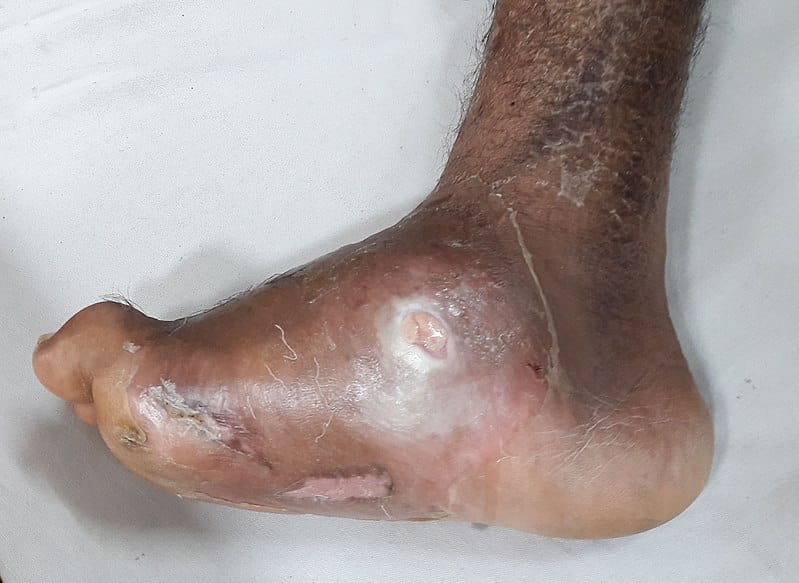Introduction
- Introduce yourself to the patient
- Wash your hands
- Briefly explain to the patient what the examination involves
Always start with inspection and proceed as below unless instructed otherwise; be prepared to be instructed to move on quickly to certain sections by the examiner.
Inspection
- Ask patient to go for a short walk, assessing their gait
- Difficulty walking or antalgic gaits can assess psychosocial implications of any diabetic foot disease
- Ask patient to remove socks and shoes, and lie flat on the bed
- Assess patients shoes, looking for uneven or excessive wearing on soles or heels
- Assess for symmetry, scarring, deformity, skin changes, or ulcers
- Important to check between the toes and on the heels for any hidden ulcers or gangrene
- Any Charcot’s Neuropathy will present with potential deformity (classically a ‘rocker sole’ foot) and erythematous
Assessment
- Feel peripheral pulses
- Check dorsalis pedis and posterior tibial pulses
- Assess capillary refill (an increased refill time is >2 seconds)
- Check the temperature of the lower limbs
- Start from the hip and work distally on both sides
- Assess sensation in the limbs, asking patient to close their eyes and start distally and working proximally
- Assess soft sensation with a cotton wool ball or a 10g monofilament
- Assess sharp sensation with a neurotip
- If no sensation present, move more proximally in the lower limb
- Check vibration sensation in the limb using a 152Hz tuning fork
- Place tuning fork on bony prominences, on the end of the big toe
- If no vibration sense, place on more proximal bony prominences
- Check for an ankle jerk reflex
Completing the Examination
Remember, if you have forgotten something important, you can go back and complete this.
To finish the examination, stand back from the patient and state to the examiner that to complete your examination, you would like to perform a:
- Capillary blood glucose measurement
- Peripheral vascular examination
- Urine dipstick
- Fundoscopy

